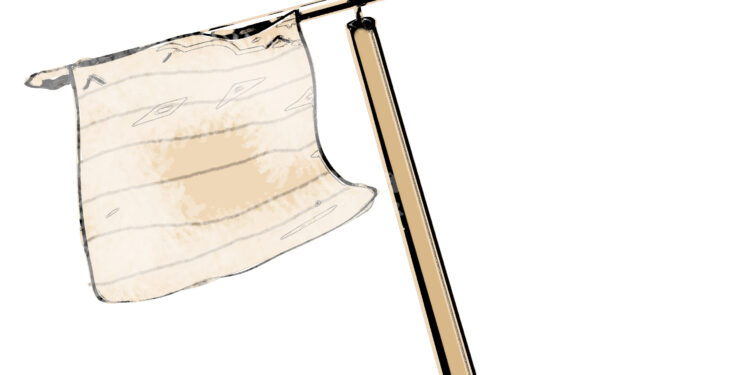Someone has said, and rightly so, that autumn is less a season of nature and more a season of the soul. It is the deep breath held between the exhale of summer and the inhale of winter. Every fallen leaf reminds us of the painful departure of someone dear from our lives. Every cold breeze recalls the cooling of once-warm feelings. Every short day and long night whispers to us to rest and reflect. Every decaying branch is a memento mori — a quiet reminder of death. Every cut of the sickle reopens old wounds and refreshes past hurts.
Yet autumn is not only about sorrow. It is also a stern reminder that we are about to reap what we have sown with such great effort and care. It is the season that teaches us that there is a great glory in letting go. The golden, dim light of autumn — which poets call liquid gold — is not merely weak; it is transformative. It gilds the world, turning even the most ordinary landscapes into something epic and nostalgic.
While I carry with me hundreds of thousands of bittersweet memories of this silent yet charming season — memories which I have preserved so carefully in the jewel box of my heart. Each one feels like a precious pearl in my jewel box. Every childhood memory is alive within me. Be it roaming freely in the soft autumn evenings or playing marbles with friends or laughing under the fading light, all of it feels as fresh as though it happened only yesterday.
But here, I wish to unfold one memory in particular, one tied to a simple yet enchanting village toy — the TIKWAWEJ.
The name Tikwawej is a combination of two terms: tik- and wawej. In Kashmiri, wawej refers to a simple hand-fan–like instrument used to create airflow, while tik- suggests the rhythmic clicking sound produced as the wawej rotates. Joined together, these elements form the unique name Tikwawej.
This village toy was incredibly easy to make and required very little effort. Almost every boy or girl in the village could make it with ease. Making it was a quick three-to-five-minute task, provided the raw materials were available. Fortunately, everything could be found locally like four thorns about an inch long, a sheet of paper, a culm and the uppermost cylindrical segment of a maize stalk. The portion just beneath the tassel (locally called Houeel) was considered the most ideal for crafting the Tikwawej.
Once all the materials were gathered, the process began by cutting the paper sheet into two rectangular strips, each with a length about twice its breadth. A convenient segment of the maize stalk was then carefully cut from the main plant. Around this segment, the two paper strips were wrapped tightly and secured in place using the thorns — serving the same purpose as modern staples or hooks.
In the middle of this stalk segment, exactly between the two wrapped strips, a small hole was bored. Through this hole, a few inchs long segment of thin culm (hollow stem) of a locally available grass was inserted so that paper strips along with stalk could rotate freely. The front end of the culm was capped with a very small stalk segment and the back end was inserted into another stalk segment of nearly the same size as the one holding the paper strips. This simple yet ingenious assembly completed the Tikwawej, ready to produce its characteristic tik-tik sound.
All that was left to do was hold the Tikwawej in your hand and run against the wind. As the wind flowed over the paper strips, it provided them with kinetic energy, causing them to rotate due to aerodynamic force. Since the strips were attached to the stalk shaft, the shaft would rotate around the culm, producing the rhythmic sound tik-tik-tik — hence the name Tik-wawej.
When I was a boy, I would often assemble four or five Tikwawejs on the near-to-ground and very dry portion of a maize stalk. The sound they produced was louder, and I could feel the air they collectively pushed.
Years later, as I grew into a high school boy, I realised that while Tikwawej may have seemed like just a simple village toy, it quietly played an important role in my development. It helped refine my fine motor skills and stimulated early cognitive learning. Through play, it taught me the basics of circular motion and gave me a glimpse into how windmills rotate.
I vividly remember one evening in 2004, when I was in Class 10. It was crop-reaping season, and my younger brother was pleading me to make a Tikwawej for him. In those days, passing matriculation was considered a great milestone — justifying the ever-melodious Kashmiri song: “Tchus be matric pass, hasa pass hasa hay.”
I had just finished making the toy when a very old gentleman from my village told me something that has stayed with me ever since. Pointing to the Tikwawej he said that the rotation of the wawej symbolises the rotation of days and nights, while the tik-tik sound signifies the ticking of time itself. At that moment, I could not fully grasp the depth of his words, perhaps because I was too young, or perhaps because the pressure of my upcoming exams weighed too heavily on my mind. But those words return to me now and then, reminding me how a simple toy once carried a quiet, timeless wisdom.
Bashir Ahmad Dar is a teacher by profession and can be reached at darbashir1234321@gmail.com





